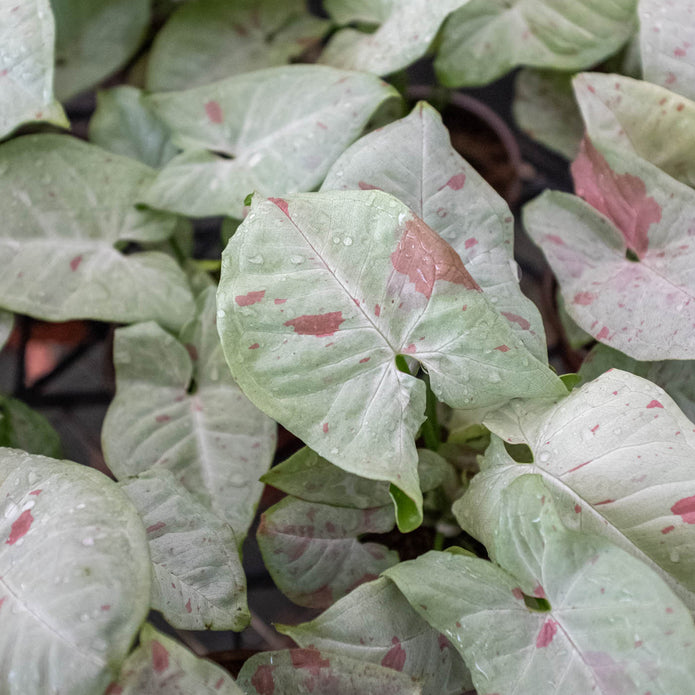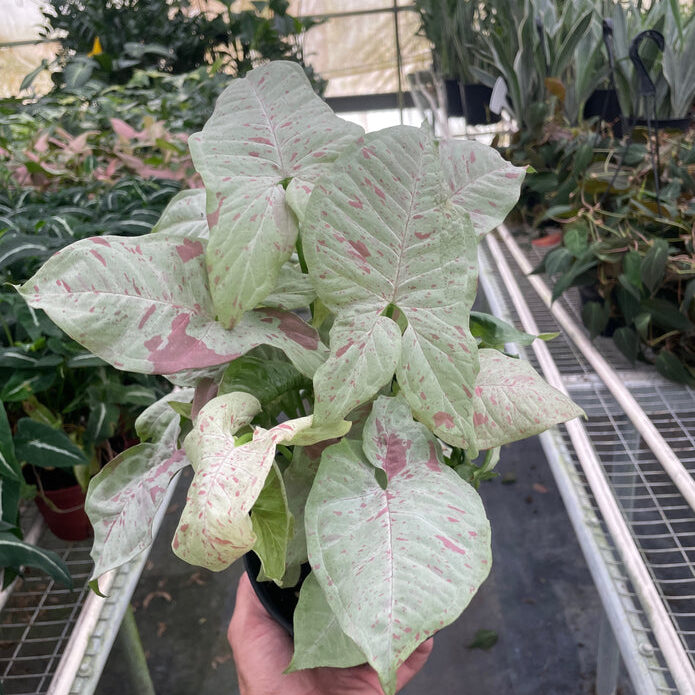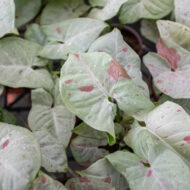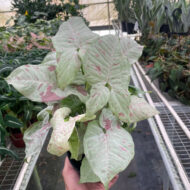Syngonium Milk Confetti
Botanical Name: Syngonium podophyllum 'Milk Confetti'
Common Name(s): Milk Confetti Arrowhead Plant
The Syngonium Milk Confetti is adored for its beautifully variegated foliage, which features an intricate mix of creamy white and light green markings on each leaf, resembling scattered confetti or milk splashes. The contrast of these bright, pastel hues against the darker green veins creates a vibrant, eye-catching look that is sure to enhance any indoor garden or plant collection. As the plant matures, its leaves develop into an elongated arrowhead shape, adding to its ornamental appeal.
This Syngonium is relatively easy to care for, making it an excellent choice for both beginner and seasoned plant enthusiasts. It thrives in bright, indirect light, which helps preserve its creamy white variegation. In lower light conditions, the variegation may fade, and the plant’s growth may slow down. Like other Syngoniums, it prefers well-draining, slightly acidic soil, and it should be watered when the top inch of soil feels dry to the touch. Overwatering should be avoided, as the plant is prone to root rot in soggy conditions.
This variety of Syngonium also enjoys moderate to high humidity levels, which helps maintain its lush appearance. It can thrive in kitchens, bathrooms, or other areas with naturally higher humidity, but in drier environments, occasional misting or the use of a humidifier can help keep the plant healthy.
Air Purifying Qualities:
- Toxin Removal: The Syngonium Milk Confetti is effective at filtering out common indoor toxins, such as formaldehyde, benzene, and xylene, helping to purify the air in your home or office.
- Oxygen Production: Like other houseplants, it absorbs carbon dioxide and releases oxygen, contributing to a healthier indoor atmosphere.
- Humidity Regulation: This plant naturally increases humidity through transpiration, making it beneficial in dry indoor environments.
Note: The Syngonium Milk Confetti is toxic to pets, including cats and dogs. Please prevent pets from chewing on the leaves as it can result in stomach upset, vomiting and difficulty swallowing.
Care Insights & Expert Tips
- Fertilize regularly: Feed your Syngonium with a balanced liquid fertilizer diluted to half strength every 2-4 weeks during the growing season.
- Monitor for pests: Keep an eye out for common houseplant pests like mealybugs and spider mites. Treat infestations promptly with insecticidal soap or neem oil.
- Pruning: Prune your Syngonium regularly to encourage healthy growth.
- Propagation: Syngoniums can be easily propagated through stem cuttings.
- Unique leaf shape: Syngoniums are known for their distinctive, arrowhead-shaped leaves, which can vary in color and shape depending on the variety.
- Climbing or trailing: Syngoniums can be trained to climb a moss pole or allowed to trail.

Visit our plant care library
Find essential tips to keep your plants thriving, vibrant, and healthy.




















